Undergraduate Research Opportunities Program
About UROP | FAQs | Funded Projects | Application | Contact
Funded Projects: 2018
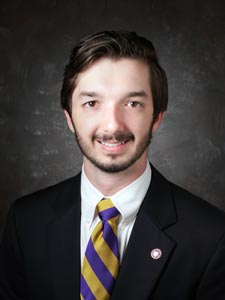 Cameron Belding, biology major, Nicholls State University (NSU)
Cameron Belding, biology major, Nicholls State University (NSU)
Faculty Advisor: Ramaraj Boopathy, NSU Department of Biological Sciences
Use of Microbial Biofertilizers in Coastal Restoration of Wetland Plants in Southeast Louisiana
Some soil microbes called plant growth-promoting rhizobacteria (PGPR) enhance plant growth, but previous studies focused on crop plants. Belding will see which bacterial communities enhance growth of the coastal grass, Spartina alterniflora. This research will be useful for restoration projects where biofertilizer use could produce healthier plants while also increasing soil health.
Logan Betzer, Civil Engineering major, LSU
Faculty Advisor: Navid Jafari, LSU
Continuous Monitoring and Analysis of Marsh Shoreline Evolution to Understand Erosion Mechanisms
The rate of erosion at the marsh edge is vital for predicting the marsh longevity. In his or her research, the student seeks to develop a robust marsh edge erosion model that incorporates hydrodynamic, soil and vegetation properties. This information would lead to improved coastal restoration and management efforts across the state.
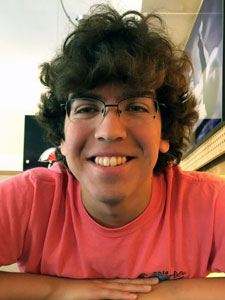
Joshua Cobar, Chemical Engineering major, Louisiana State University (LSU)
Faculty Advisor: Evelyn Watts, LSU AgCenter
Black Drum Shelf Life Comparing Three Packaging Technologies
Seafood is important to Louisiana; it’s the second largest commodity in the state by value. Cobar will investigate ways to better preserve and package one of the state’s main fish products – black drum. He will evaluate shelf life and quality of black drum using three different packaging technologies.
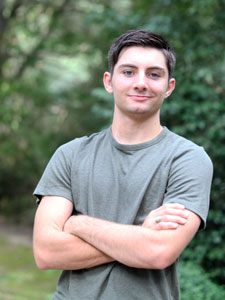
Ean Hill, Coastal Environmental Sciences major, LSU
Faculty Advisor: John White, LSU
A Wetland Carbon Inventory for Coastal Louisiana: Implications for Climate Change and Carbon Credits
Hill will dig through 6,000 soil samples from Louisiana Coast-wide Reference Monitoring System stations to measure organic carbon content. With this information, he’ll see how wetland organic matter is converted into organic carbon. Understanding this relationship is invaluable to the state, as it could reduce monitoring costs over time.
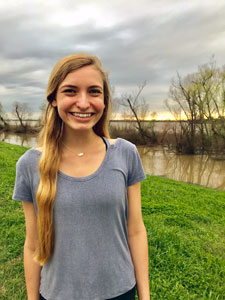
Olivia Hunt, Civil Engineering major, LSU
Faculty Advisor: Michele Barbato, LSU
Evaluation of Lightweight Gypsum-based Materials for Oyster Reef Reconstruction and Coastal Protection
Gypsum-based materials are currently not used in underwater construction. A novel gypsum-based blend could prove valuable for construction of coastal protection structures and artificial reefs in southern Louisiana. Hunt will work on a pioneering study of the mechanical and physical properties of high-strength, lightweight, gypsum-based blends for artificial reef construction.
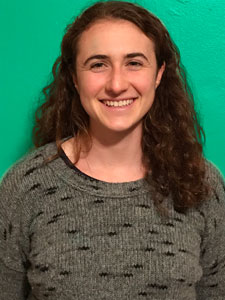
Jennifer Lamori, Environmental Health major, Tulane University (TU)
Faculty Advisor: Samendra Sherchan, TU
Occurrence of Naegleria fowleri in Sediments from Lake Pontchartrain, Louisiana
Naegleria fowleri is a free-living amoeba that causes primary meningoencephalitis, which can be fatal. Lamori will study the occurrence, quantity and survival of N. fowleri in Lake Pontchartrain sediments, in the hopes of developing guidance for state and federal regulatory agencies on protection of state water supplies.

Lauren Little, Biology major, LSU
Faculty Advisor: Fernando Galvez, LSU
Susceptibility of Crude Oil Exposed Gulf Killifish to a Marine Bacterial Infection
Little will assess immune function and disease resistance in adult Gulf killifish with varying exposure histories to Macondo oil. Using different populations of killifish exposed to oil in the laboratory, she will determine the effects of embryonic oiling later in life and the effects of parental oiling on immune function in offspring.
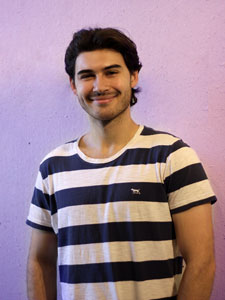
Steven Medina, Ecology and Evolutionary Biology major, TU
Faculty Advisor: Sunshine van Bael, TU
Bald Cypress Microbial Communities under Flooding and Drought Stress
Medina will study how bacteria and fungi in the roots of baldcypress influence the trees’ resilience to flooding and drought conditions. His experiments will reveal how plant microbiome changes with hydrological stress, which is important information considering many restoration projects involve the planting of baldcypress trees.
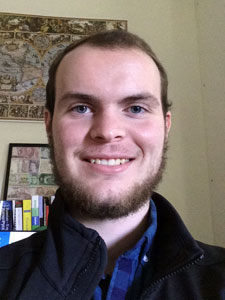
David Thomas, Biochemistry major, LSU
Faculty Advisor: Terrence Tiersch, LSU AgCenter
3-D Printing of Cryopreservation Devices for Standardization and Commercialization of Genetic Resources in Aquatic Species
Thomas will create and test devices using three-dimensional (3-D) printing, with the aim of improving freezing rates for cryopreservation of aquatic species. Cryopreservation is useful for conservation of endangered species, improvement of farmed species and management of wild populations subject to genetic change.
